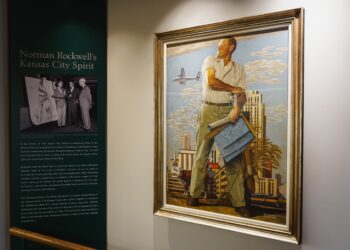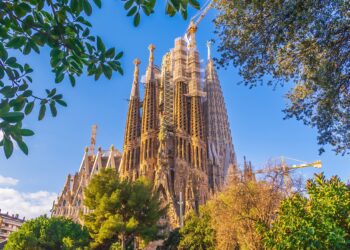It happens to all of us that when we find ourselves in front of some abstract paintings, such as the works of Wassily Kandinsky (1866-1944), we hear different viewers express the most vulgar, vulgar and hateful comment about the artists, and even very offensive to the art itself: “I do that too,” or “Even a child can do that.” The truth is “NO”, an ordinary person or a child cannot create such works of art, no matter how abstract or minimalistic they may seem. The only truth that such comments carry is that artists throughout their careers, until their last breath, aim to create a child’s art, since a mature hand painting with the simplicity and innocence of a child is the greatest achievement. sublime in art.
Another mistake common viewers, novice art lovers, and amateur artists make is to think that art is naive and artistic ability is nothing more than a talent, skill, or sleight of hand, without realizing how deep and comprehensive the minds were. of the creators of these masterpieces. Therefore, when we talk about the abstract works of the Russian painter and art theorist, Wassily Kandinsky, we must understand that he was among the most educated and intellectual artists of the 20th century.
Just as Paul Gauguin followed the calling of art and left his career, family and Europe to go across the ocean, Wassily Kandinsky, the son of a wealthy tea merchant, after studying law and finance at the University of Moscow, became a professor of jurisprudence , abandoned his comfortable job and decided to become an artist. From Russia he moved to Germany, enrolled at the Munich Academy of Arts, and became one of the most important modern painters of the 20th century, being known today as the father of abstract art.
What made a jurist and financier, a prominent intellectual who defended his doctorate with the dissertation “Legislation on workers’ wages” take this sudden turn?
There were two events that led Kandinsky to take a radical turn in his life. The first was the exhibition of Impressionist painters in Moscow in 1895, where he saw the series of paintings The Straw Hats by Claude Monet, which with their varied colors, immediate and unfinished treatment completely surprised Kandinsky. Later he would remember that moment like this:
I couldn’t tell they were straw men. The ability not to recognize them was painful for me. And, I thought that the subject of the painting had disappeared, and I saw with bewilderment that the picture not only captured me, but was inextricably rooted in my memory. The painting suddenly took on a fabulous strength and brightness.
The second event came from an opera. During a performance of the famous composer Richard Wagner’s musical work Lohengrin at the Bolshoi Theater in Moscow, Kandinsky experienced synaesthesia, a mental phenomenon, a sudden neurological outburst in which multiple senses can blend into one another. Through music he could see colors and for each sound a certain shade appeared to him: “I saw with my soul all my colors, they appeared before my eyes. Wild, almost insane lines sketched themselves before me.”
People diagnosed with synesthesia state that they can hear the sounds of colors or actually feel the taste of music on their tongue. Synesthesia (or “united perception”, comes from the Greek word syn meaning “union” and aisthesis meaning “perception”). It is a rare but real phenomenon in which one sense, such as hearing, simultaneously activates another sense, such as sight. People with synesthesia begin to smell something when they hear a sound, or see a shape when they eat a certain food. Kandinsky really saw colors when he listened to music and heard music when he painted. So even after that event, Kandinsky decided to paint music. This is why he gave musical titles to many of his paintings, such as Composition or Improvisation.
He later wrote that during Lohengrin’s opera, “It became absolutely clear to me that art in general was much more powerful than I had thought, and that painting, on the other hand, was capable of developing powers similar to of music”.
Therefore, even after these experiences, as can be seen in the work Composition VII, Oscillation, Transversal Line, and all his paintings, Kandinsky developed a measured, mature, methodical and complete abstraction. He began to paint what musicians were able to create with music. He became the artist who painted the music. And, through abstract forms he began to express the human spirit.












